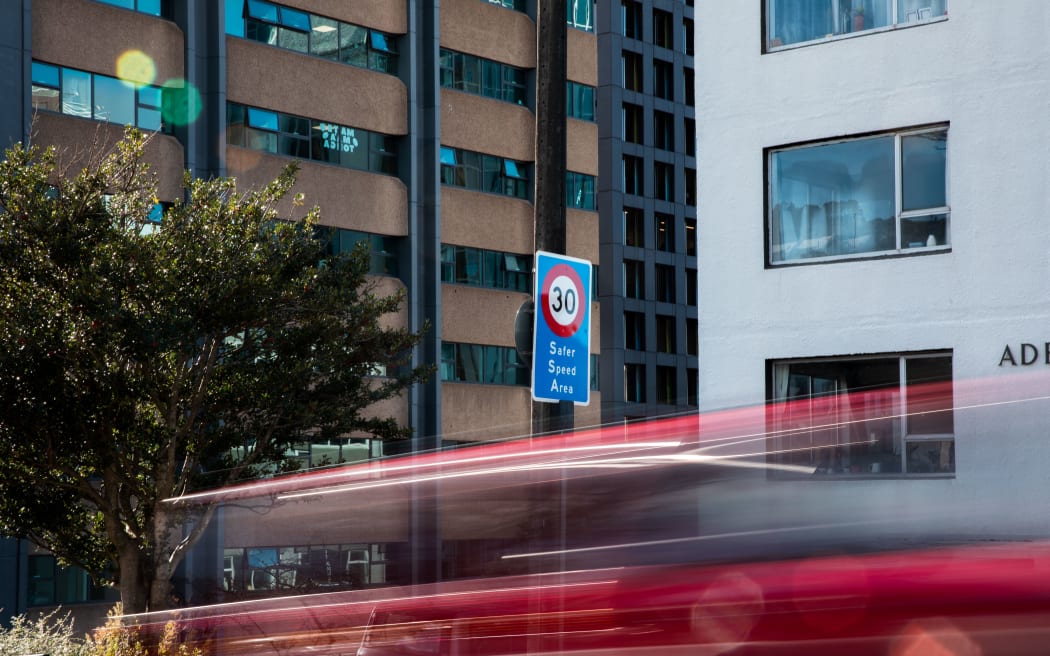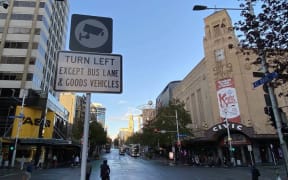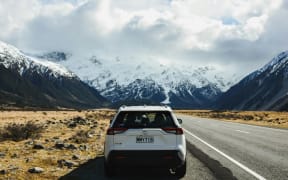
Photo: RNZ / Samuel Rillstone
Waka Kotahi paid consultant PWC to try to meld together its two new vehicle-spotting technologies, only to have to pull them back apart, documents show.
The Transport Agency wanted to see if it could use the same tech platform for both highway safety speed cameras and tolls, and save money, on a total spend worth over $130 million.
But it found out it could not - and the uncertainty has only grown since around the tolling system's design.
The design phase had "experienced some delays", said the agency's chief digital officer, Liz Maguire, in an OIA response.
"The safety camera infringement scope was included and then subsequently excluded."
The agency added on Tuesday:
"The intent was to realise efficiencies and cost savings by having a singular back-office platform (ie spend a little to save a lot)."
It explained that this did not work out because tolls were a revenue platform, and cameras were for processing infringements - like speeding.
On top of that, the toll design has had to be added to multiple times since Waka Kotahi awarded the tender to Spanish firm SICE two years ago.
One problem was having to customise it for New Zealand's needs more than anticipated, Maguire said.
In fact, they had had to come up with a whole new project scope and plan - what is called a "Statement of Work".
"The ... project team are undertaking commercial negotiations to finalise this with them [SICE]."
Public agencies were increasingly being encouraged, even ordered, to buy standardised, non-customised IT systems to save money.
SICE was signed up in a 10-year install-and-run deal for $39m in 2022, documents showed.
At that point, the new toll back-office tech had been expected to be in place within a year.
Without it, the government cannot realise its intent to introduce more tolls to help cover big gaps in road funding.
Maguire said the new scope and approach - which she called an "agile iterative delivery model" - would let NZTA "deliver faster and reduce delivery risk".
"This revised implementation approach is expected to start in October 2025," she said.
This week, the government announced more powers for Waka Kotahi to take over decisions around the scope and delivery of major road building projects from ministers, to try to cut delays and scope creep.
In its attempt to combine the toll and camera back-office systems, the agency paid consultants PWC $112,000, at a rate of $2850 a day, for a "programme director", the NZTA annual review showed.
This was a fraction of the $4.2m NZTA paid PWC in 2022-23 for detailed design of six variations for the camera system.
Waka Kotahi's total spend with PWC has risen from $4.4m in 2021, to $11.5m last year. This included $3.1m for mostly "customer engagement and change-related activities" on the $1.3 billion national ticketing project.
The agency said it tried to re-use tech platforms where feasible.
However, it attempted this with the tolls-and-cameras platforms, to meld them together, well after it had already signed SICE on.
One upshot of dropping that attempt was that this has left the toll system "picking up responsibilities and tasks previously shared with the SCS [camera] programme", the annual review said.
On top of that, SICE had requested "additional requirements" and, "changes to digital architecture".
Extra work was going on, to comply with New Zealand data security requirements.
These changes were all extra to the specifications for the tolling tech agreed back in 2022, the agency said.
It was envisaged early on that the toll tech could also be used for congestion charging.
That design was now taking place, "to add additional capability, such as facilitating other road pricing schemes", Maguire said.
Auckland expects to introduce congestion charging - or "time-of-use" charges - next year. In early May, Auckland Transport said it was about to begin talks about possibly sharing NZTA's tech platforms.
It is not clear what the tolling system will cost, now it is being renegotiated.
As for the speed-safety camera system, the agency refused to release the contract for that to RNZ, on the grounds of "confidentiality provisions" with Arizona company Verra Mobility.
The annual review put the forecast final cost of the camera system by 2025 at $116m, actually $17m under budget.
The agency last year awarded global consultancy EY a contract worth $1.8m-$2m to be its safety camera system delivery partner.
It also paid an agency, Momentum, $164,000 for "communications support" for the safety camera programme, part of $1.7m spending on communications with contractors in 2022-23.
Analysts and managers went to Australia seven times last year to talk to the vendors about either the toll or camera systems.
The first "smart" cameras that will run on the platform were installed on a dangerous stretch of Northland highway a few months ago. For now, these are only being used to ping speedsters - but the tech due for nationwide rollout in coming months can do much more than that, such as see inside a car to whether a driver was on the phone or not wearing a seatbelt.






